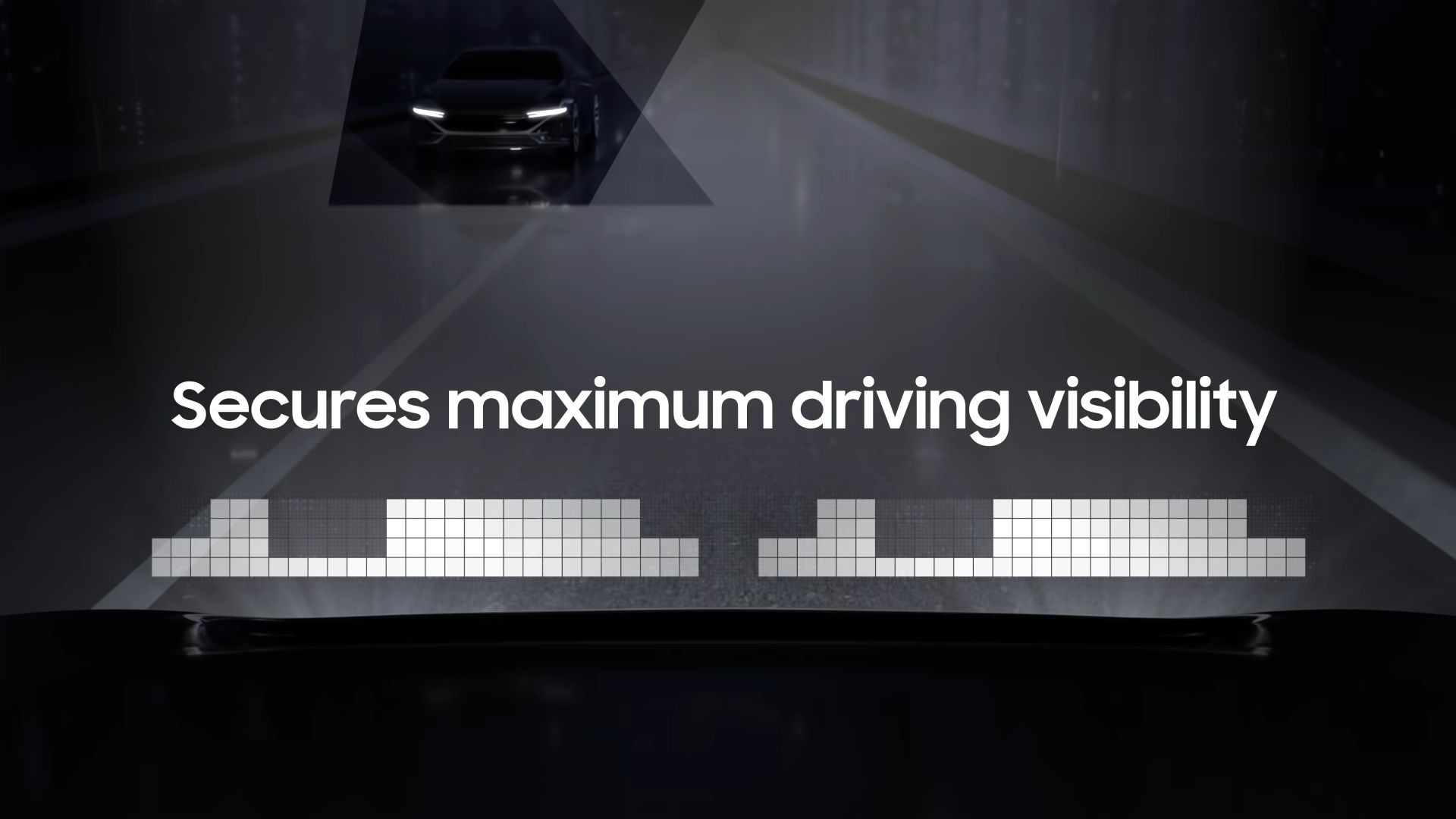Samsung's new PixCell LED headlamp uses ISOCELL-like pixel isolation tech
Last updated: May twelfth, 2021 at 17:18 UTC+01:00
Samsung has detailed its next-gen LED module for intelligent headlights, PixCell LED, in a fresh official introduction video. In Samsung's own words, PixCell LED is the perfect solution for energy efficient lamps fit for the sleek and stylish vehicles of the futurity. It's an Adaptive Driving Beam (ADB) solution that leverages Samsung'southward avant-garde semiconductor technology to improve upon the ADB concept in several ways. More then, PixCell LED is a product that strengthens the Korean tech giant's ambitions of becoming a bigger component of the automotive market and its supply concatenation.
It sounds a lot like PixCell LED uses technologies like to ISOCELL, or at least it relies on principles that have been used by Samsung's mobile camera division for many years. The new LED headlamp uses what Samsung callsSilicon Wall technology to create a solid wall structure between pixels. Isolating each pixel allows for more refined lite command, which is what ADB is more often than not nearly.

ADB is a organisation designed to minimize glare for oncoming traffic while providing ample luminosity for the driver. The arrangement is supposed to runway oncoming cars and lower the brightness of the headlights only in specific areas. Of class, some ADB systems work better than others, and at that place are many factors that contribute to this variety of outcomes. Light command is one of these factors, so you tin see how pixel isolation becomes massively important for LED headlights that were designed for ADB systems.
Globe's narrowest pixel gap ways reduced overall book
The aforementioned Silicon Wall technology has as well immune Samsung to narrow the gap between pixels to simply 25 micrometers — 1/16th the size of traditional LEDs. In turn, this can significantly reduce the size of vehicle headlamp modules and simplify the optic organization.
PixCell LED follows a Monolithic Integrated Architecture comprising 100 ultra-small-scale LED segments onto a single chip. Each of these LEDs are individually-addressable. Thank you to this and the module's small footprint, PixCell LED adheres to various global regulations and it tin can exist adapted with minimal software adjustments.
This is a huge deal for auto manufacturers who sell cars in multiple markets across different continents. Using PixCell LED, they won't take to spend a lot of time and resources adapting their headlamps for left or right-hand driving. It can all be done through software with minimal endeavour.
Last calendar month, Samsung confirmed that it has shipped enough PixCell LED modules to light more than than 300,000 EVs (electrical vehicles). Until these modules hitting the route, you can encounter a digital representation of PixCell LED and its technical capabilities in the official introduction video below.
Source: https://www.sammobile.com/news/samsung-new-pixcell-led-headlamp-uses-isocell-like-pixel-isolation-tech/
Posted by: browningplics1965.blogspot.com


0 Response to "Samsung's new PixCell LED headlamp uses ISOCELL-like pixel isolation tech"
Post a Comment